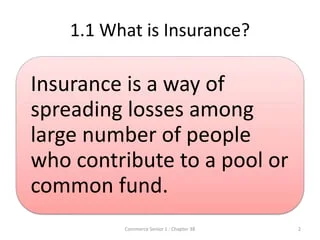The Single Strategy To Use For Pacific Prime
The Single Strategy To Use For Pacific Prime
Blog Article
Rumored Buzz on Pacific Prime
Table of ContentsPacific Prime Fundamentals ExplainedThe Ultimate Guide To Pacific PrimeNot known Facts About Pacific PrimeThe Single Strategy To Use For Pacific PrimeThe Ultimate Guide To Pacific Prime

This is because the data were accumulated for a duration of strong financial efficiency. Of the estimated 42 million people that were without insurance, almost regarding 420,000 (concerning 1 percent) were under 65 years old, the age at which most Americans become eligible for Medicare; 32 million were grownups in between ages 18 and 65, around 19 percent of all adults in this age; and 10 million were kids under 18 years old, concerning 13.9 percent of all children (Mills, 2000).
These quotes of the variety of individuals without insurance are generated from the annual March Supplement to the Present Populace Study (CPS), conducted by the Census Bureau. Unless or else kept in mind, nationwide estimates of individuals without medical insurance and percentages of the population with different sort of coverage are based on the CPS, the most widely used source of quotes of insurance coverage and uninsurance rates.
The Greatest Guide To Pacific Prime

Still, the CPS is specifically valuable since it creates annual price quotes relatively rapidly, reporting the previous year's insurance protection approximates each September, and due to the fact that it is the basis for a regular set of estimates for greater than twenty years, enabling evaluation of trends in insurance coverage with time. For these reasons, as well as the extensive usage of the CPS in other studies of insurance policy coverage that are presented in this record, we rely on CPS price quotes, with restrictions noted.

The estimate of the variety of uninsured individuals expands when a population's insurance condition is tracked for several years. Over a three-year period starting early in 1993, 72 million people, 29 percent of the united state populace, lacked coverage for at the very least one month. Within a single year (1994 ), 53 million people experienced at the very least a month without protection (Bennefield, 1998a)
6 out of every ten uninsured grownups are themselves employed. Functioning does enhance the likelihood that one and one's household members will certainly have insurance, it is not a warranty. Even members of family members with two permanent breadwinner have virtually a one-in-ten possibility of being without insurance (9.1 percent without insurance rate) (Hoffman and Pohl, 2000).
Pacific Prime for Beginners
New immigrants represent a significant proportion of people without medical insurance. One analysis has connected a considerable part of the current development in the dimension of the U.S. uninsured population to immigrants who showed up in the country in between 1994 and 1998 (Camarota and Edwards, 2000). Current immigrants (those that involved the USA within the previous 4 years) do have a high price of being uninsured (46 percent), but they and their children account for just 6 percent of those without insurance coverage country wide (Holahan et al., 2001).
The partnership in between medical insurance and accessibility to care is well developed, as recorded later on in this phase. The connection between health insurance and wellness results is neither direct nor straightforward, an extensive professional and wellness services research literary works links health insurance policy coverage to improved accessibility to care, much better quality, and improved individual and population wellness condition.
Levels of evaluation for examining the impacts of uninsurance. It concentrates particularly on those without any kind of health insurance coverage for any type of size of time.
All about Pacific Prime
The troubles dealt with by the underinsured are in some respects comparable to those dealt with by the uninsured, although they are usually much less severe. Wellness insurance coverage, however, is neither necessary neither sufficient to obtain accessibility to medical solutions. The independent and direct result of health and wellness insurance protection on access to health and wellness services is well developed.
Others will get the healthcare they require also without health insurance policy, by paying for it expense or seeking it from carriers who supply care cost-free or at extremely subsidized prices. For still others, medical insurance alone does not ensure receipt of treatment because of various other nonfinancial obstacles, such as a lack of wellness care suppliers in their community, restricted accessibility to transport, illiteracy, or linguistic and social distinctions.
Getting My Pacific Prime To Work
Formal research regarding without insurance populaces in the USA dates to the late 1920s and very early 1930s when the Board on the Price of Treatment created a collection of records concerning funding medical professional workplace visits and hospitalizations. This problem ended up being prominent as see here now the numbers of medically indigent climbed during the Great Depression.
Report this page